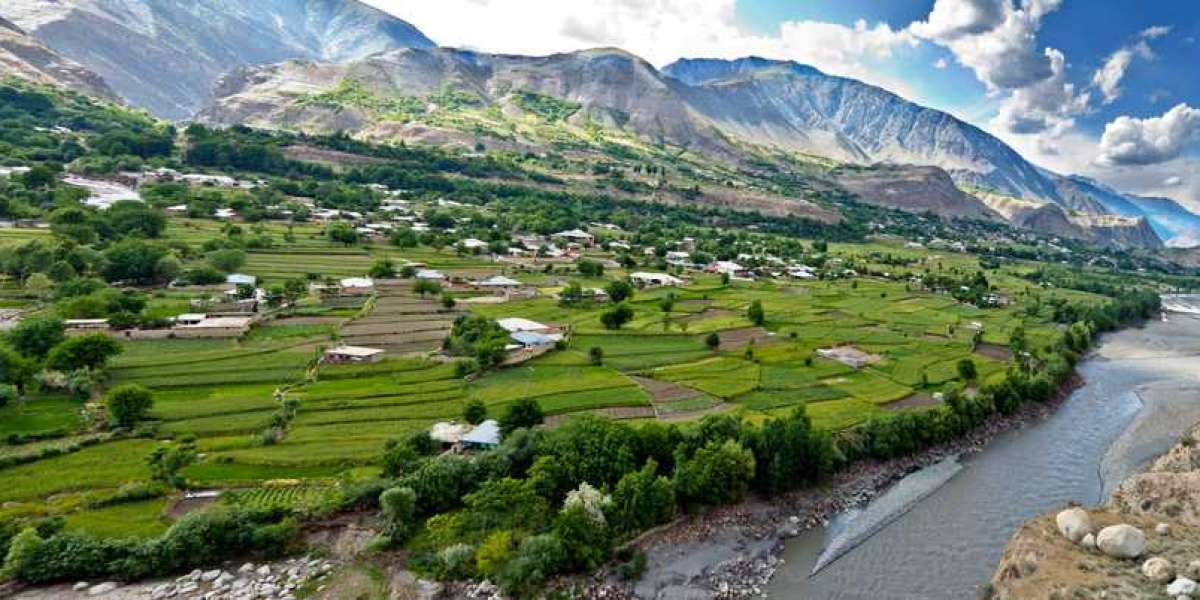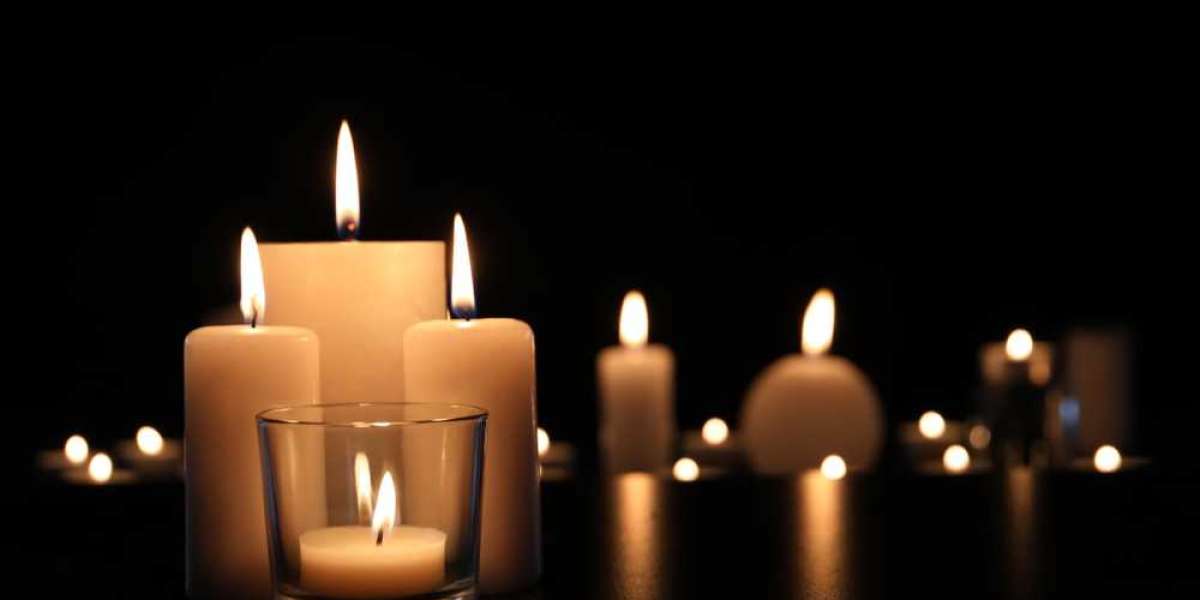Chitral Valley, hidden among the majestic Hindukush mountains, is one of Pakistan's most mysterious and captivating regions. It also happens to be one of the most serene and scintillating valleys in Pakistan.
The Chitral Valley is renowned for its captivating culture, serenity, and breathtaking natural splendor. As such, it should be visited at least once in everyone's lifetime.
The majority ethnic group is the heterogeneous Kalash people who practice polytheism and worship multiple gods. They also follow Zoroastrianism as their religion.
Chitral Valley is considered one of Pakistan's most tranquil spots and draws tourists from around the globe. The area boasts a diverse ethnic culture with more than a dozen language groups. It also harbors numerous animals like the Red Fox, Markhor, and others.
Kalash People
The Kalash are distinctive people living in three valleys of Chitral - Rumbur, Brumbret, and Birir. Their language, culture, and religion differ from that of other communities in the region.
They believe in 12 Gods and Goddesses. Furthermore, they have their own customs and rituals which are deeply rooted in their environment and culture.
Kalash women adhere to stringent tribal customs regarding purity. During menstruation, they are banished to the "bashali" house and only allowed back in after having undergone several rituals that restore their purity.
Females are forbidden from combing their hair, which is considered unclean. They typically dress in black shirts and dresses adorned with vibrant colors.
The Kalash people are one of the last remaining indigenous cultures in the world, yet their rich and ancient heritage is under threat from various factors like forced conversions, migration, climate change, and violence from outside. Particularly they face mounting pressure from Islamists who wish to 'Islamize' their three valleys by surrounding them with an Islamic population in every way possible.
Kalash Valley
Kalash Valley is one of Chitral's most picturesque valleys, situated along a winding road connecting Chitral to several villages. Divided into three smaller valleys - Bumburet, Rumbur, and Birir - by trails leading to stunning views of mountains and streams, the Kalash Valley offers something special to all who pass through it.
The valley is home to the Kalash people, a pre-Islamic community that predated Islam by centuries. They practice pagan worship of Jastak - goddess of family, love, marriage, and birth - as well as having unique customs and traditions rooted in Hinduism which have been passed down through generations.
Kalash people have experienced many hardships throughout history, some caused by climate change and others by an influx of migrants into the valleys.
In 2015, flooding devastated Rumbur and surrounding valleys. Debris washed away fields, houses, roads, and water mills in what is estimated to have been 40 waves of floodwaters that made life difficult for people living there.
These floods were caused by rising temperatures and shifting rainfall patterns. Furthermore, the flooding caused extensive damage to crops planted in these areas.
Despite these obstacles, the Kalash Valley remains a stunning tourist destination. To get the most out of your experience in this region, hire a local guide - UNESCO recently trained a group of Kalash tour guides in order to promote responsible and culturally sensitive tourism within the area.
Kalash Valley residents generally reside in traditional houses made of flat stones stacked atop mortarized planks. Roofs are constructed out of slate and branches, while verandas are encircled by stone walls.
Kalash Valley houses are truly captivating to gaze upon. Many feature intricately carved doors and lintels that are believed to be thousands of years old.
They are situated in green valleys at the base of slopes. Since these valleys are often used for agriculture, houses are designed so as to maximize sunlight exposure.
Koghazi Valley
Koghazi Valley, Chitral's capital city, is one of the premier tourist attractions. Surrounded by majestic mountains, lush green meadows, and an unforgettable landscape, this valley will leave you in awe.
The valley is home to an array of flora and fauna, making it a popular hiking spot. Additionally, the region is known for its hot springs and trout fishing opportunities.
Koghazi Valley can be easily reached by road from Islamabad or Peshawar. The journey takes only 10 hours and provides plenty of scenic stops along the way.
For your stay in the valley, consider staying at a hotel or guest house. These establishments provide numerous amenities and an inviting atmosphere to tourists.
If you're looking for an affordable vacation, tenting or camper veining are both viable options. Additionally, there are a few Kalash-owned places to stay in the valley that allows visitors to experience some local culture while they're there.
One of the primary attractions in Chitral is Tirich Mir, the highest peak of the Hindukush Mountains. Known as either the "Pride of Chitral" or "Jewel of Hindukush," this mountain should not be missed during your vacation there.
There are a few routes you can take to reach the summit. The most popular is through Shandur Pass, an expansive tableland connecting Chitral with Gilgit-Baltistan that hosts a three-day polo festival each July.
The valley is a popular destination for hiking, climbing, and trekking. Popular routes in the region include Drosh, Madaklasht, Golden, Kuguzi, and Shoghore trails.
In addition to these hikes, there are plenty of other exciting activities you can partake in while visiting the valley. Some popular choices include paragliding, swimming, rock climbing, and cliff rafting.
Foodies will enjoy some of the finest cuisines in this valley. With influences from Mughal and Central Asian cultures, the cuisine incorporates milk products, dairy items, as well as various vegetables.
Experience traditional festivals throughout the region, such as the Nouroz festival. This celebration takes place in Mastuj, Laspur, Yarkhoon, Khot, Rech, and Karimabad and brings families together to exchange gifts and have fun.
Garam Chashma Valley
Garam Chashma Valley is one of Chitral's most captivating attractions, boasting scenic beauty, trout fishing, and pleasant weather that draws tourists from around the globe. Additionally, its hot springs that bubble out of Sulphur deposits have long been used as a natural cure for skin diseases.
Sulfur springs are believed to possess healing powers, with local residents believing the hot water can cure rheumatism, chronic headache, gout, skin disorders, and more. As such, the area has become popular for healing baths that attract visitors from across the country.
Tourists seeking an adventure in the Hindu Kush Mountains can explore this valley. Trekkers will be rewarded with stunning views of Tirich Mir, the highest mountain in the range at 25,289 feet.
Another highlight of this valley is the Lutkoh River, which cascades down from lofty peaks and provides ample fishing opportunities. This river boasts beautiful gorges and waterfalls as it flows through stunning valleys.
Visitors to the area are treated to stunning views of snow-covered peaks that form part of the region's landscape. Furthermore, they can explore numerous lakes encircled by stunning mountains.
Visitors to this valley can also take a dip in the natural hot springs and experience traditional spa therapy. The ideal time for visiting this valley is during summertime when temperatures are comfortable enough for outdoor activities.
If you plan to visit the Garam Chashma Valley, I highly recommend booking your accommodation in advance. Hotels in the area are excellent and their staff will do their best to make sure your stay is comfortable.
The Garam Chashma Valley is home to a diverse population, including the Khow people - believed to be its oldest inhabitants with thousands of years of settlement in this valley.
Madaklasht Valley
Madaklasht Valley is an idyllic destination to visit near Chitral in the Hindu Kush Mountain ranges. Here you'll find plenty of opportunities for outdoor adventures like skiing and trekking.
Tourists flock to this valley for its picturesque landscape and intriguing culture, which includes several ethnic groups such as the Kalash people.
This valley is renowned for its diverse flora and fauna. It boasts an array of plants and flowers that are rare elsewhere.
The mountains in this region are towering and can be seen from all points around. Tirich Mir, at 25,263 feet high, stands as the highest point.
Moreover, this valley is encircled by glaciers and other mountains which add to its allure. It boasts several waterfalls and lakes that make for a stunning sight.
Trekking and rafting are popular activities in this area. You can rent a jeep and explore the area on your own.
Trekking up to Madaklasht for a few days will allow you to experience the stunning landscape that this area has to offer. Visit different waterfalls and take some breathtaking pictures of the surrounding scenery.
This village is also home to a group of Persian ironsmiths. They speak an accented dialect of Dari Farsi, similar to that spoken in Badakhshan.
In addition to the native tongue, you'll hear a range of other languages spoken here. Popular ones include Dari Farsi, Urdu, Pashto, and Khowar. The people of this valley are warm and friendly, eager to answer any queries you may have.
Additionally, you can explore the valley's history during your stay here. Before 1947, this region was a princely state within Pakistan; thereafter it became part of the Malakand division within Pakistan.
During the Pakistan movement, Chitral residents supported the All-India Muslim League. Mehtar Muzafarul Mulk, the local ruler, and supporter of this cause, openly declared his support for Pakistan while serving as governor of Chitral province.
Local Languages
Chitral is a culturally and linguistically rich valley, home to over a dozen language groups and several unique traditions.
The language diversity of this area is evident in its population, which comprises several distinct ethnic groups. These include Khowar, Pathans, and Gujari shepherds - each speaking a different language.
Khowar is the primary language spoken in Chitral and it's spoken by most residents. Additionally, some people speak Pashto as well.
Madaklashti, spoken by a few individuals in Shishi Koh Valley, is another language related to Urdu and Gurgula and shares many similarities with them.
Gojri is a language spoken by an extensive population in the region. It belongs to the Indo-Aryan group and can be found both in Afghanistan and Pakistan.
Finally, Gawar-Bati speakers inhabit the Kunar River valley in southern Chitral and several villages adjacent to Afghanistan's border.
This language is similar to Gurgula but has a distinct lexicon and grammar. It draws heavily from Khowar, with which it shares close linguistic ties.
Khowar
Khowar is the language spoken by around 300,000 people throughout Khyber Pakhtunkhwa Province and Gilgit Baltistan.
Lower Chitral has long been the language of communication between different ethnic groups in the region, serving as both a means of education and as the official language during the early days of princely state rule.
One of the most intriguing features of the Khowar language is its lack of gendered grammar. This implies that one word can be used for both masculine and famine, yet no distinction can be made through grammar alone.
Furthermore, many linguistic features can be traced back to an Indo-European influence. For instance, many lexical items are formed by combining a long vowel with a low-rising pitch, while others use clitic forms of the same vowel.
Gojri
Gojri, commonly referred to as Gujur, is an Indo-Aryan language spoken in isolated pockets across northern India and is considered one of India's oldest dialects.
Gujjars speak this language and are mainly farmers and herders from Chitral Valley. They have an important role in both Chitral's history as well as that of Jammu and Kashmir.
Chitral Valley is home to several other languages, such as Khowar, Kalasha, and Kohistani.
Khowar, the primary Dardic language of Chitral Valley, is spoken by many villages along its western bank. Additionally, Kalasha people who reside in Rumbur, Bumboret, and Birir valleys on this side of the Chitral district speak it.
Madaglashti
Madaglashti is an ethnolinguistic community from Badakhshan who settled in Chitral Valley for many years before moving to the Khowar area.
They possess their own language and cultural tradition. They hold a deep belief in the ancient gods and goddesses, making their religion one of antiquity.
Furthermore, they advocate for environmental conservation and nature preservation; hence their dedication to conserving their land. Furthermore, they are renowned for their arts and crafts, folk music and dances, as well as traditional clothing.
In addition, the region is home to a diverse wildlife population, such as mountain goat markhor (Capra falconieri), Siberian Ibex, and snow leopards. Other animals found here include urial sheep, Marco Polo sheep, musk deer, and brown bears.
Chitral Valley, Pakistan's scenic gem, provides an idyllic setting to learn about local culture. Here you'll find artisans crafting beautiful handicrafts such as woolen fabric or walnut-wood furniture crafted by skilled locals.
Dameli
Dameli, situated in the southwest of Chitral Valley in the district of Khyber Pakhtunkhwa, is its largest, most populous, and most valuable language. Its 5,000 speakers live in Domel Valley ten miles south of Drosh Tehsil on the east side of the Chitral River.
This area is marked by a rugged topography with varied exposure, allowing farmers to cultivate crops from the valley floor up to 2,200 meters. Local farmers grow rice, wheat, sweet and bitter buckwheat, millet, broad beans, and other traditional field crops.
Agriculture and pastoralism are the two primary means of livelihood in Chitral. Moreover, Agricultural villages are generally situated along alluvial fans at the valley bottom, where water is distributed via artificial leats or natural streams.
Villagers raise goats, sheep, and yaks for meat, hair, milk, and dung. Sheep's wool is used in clothing production while yaks serve in livestock herding or as pack animals.
Gujari is an Indian tribe that has colonized much of Chitral. They live primarily in 14 villages along Shishi Valley's upper reaches south of Drosh and also inhabit Bumboret and Ashret valleys. Though generally low-profile individuals, Gujari have been accused of robbing and killing passing travelers across high mountain passes.
Sniardai
Chitral Valley, situated in Khyber Pakhtunkhwa province in Pakistan, is one of the world's largest valleys. Home to over a dozen ethnic groups speaking an array of languages, it boasts some spectacular landscapes.
The Sniardai are Chitral's largest and most populous Aryan group. They have lived there for over 500 years, creating a homogenous tribe with an age-old class system. Overall, these people seem contented and contented; enjoying music and hunting together.
They possess a deep-seated love for nature and are commonly referred to as friendly people. Their ancestral roots can be traced back to Central Asia, Afghanistan, and Kashmir.
These people are herdsmen with a migratory nature; they move from upper areas of Chitral to lower ones in search of pastures. Highly intelligent and clever, these individuals make excellent master craftsmen.
They are a distinct tribe renowned for their culture and traditions. They host several renowned festivals, such as Chilm Jusht and Uchhal.
Sultana
Sultana is the largest and most populous city in the region, boasting a population of around one million people.
Chitral's ruling family can trace its lineage back to Baba Ayub, a Sufi mystic disciple of Kamal Shah Shamsuddin Tabrizi who settled in Lon and Gokher villages.
Tradition states that he married the daughter of Shah Raees, an alleged descendant of Alexander the Great. Their offspring founded the Katoor dynasty which still governs Chitral today.
Mehtar Muzafarul Mulk, a strong supporter of independence from Chitral, openly declared his support for the new country in May 1947. Unfortunately, he passed away suddenly while returning home on his plane back from Chitral in 1954 due to complications arising from a plane crash over Lowari Pass on his way back.
Ethnic Groups
Chitral Valley, situated among the Hindukush Mountains of Khyber Pakhtunkhwa province in Pakistan, is home to numerous ethnic groups. However, Khow people make up over 92% of its population - accounting for almost all other minorities and communities within Chitral.
The Khow are an Indo-Aryan (Dardic) tribe from central Asia and Afghanistan. They lead a peaceful life, practice pardah (the Islamic law of observance), and are skilled artisans.
Chitral's most populous ethnic group, the Khasis are widely scattered throughout the district. They are known as agriculturists and depend on livestock for a living.
Goats, sheep, and yaks are raised for their hides, hair, milk, and dung which can then be used as food and clothing.
In the lower Yarkhun Valley, transhumant Gujars lease pastures from local residents and move their animals vertically to traditional alpine pastures. In the upper Yarkhun Valley, they raise yaks for meat and pack animals.
Another noteworthy group is the Kalash people, who inhabit three valleys of Chitral. These people possess a unique culture and celebrate several festivals annually.
The Kalash people speak a dialect known as Kalashamon and are native to three valleys of Chitral: Birir, Rumbur, and Bumburet. These people have lived there for centuries.
However, due to the inflow of Afghans and Tablighis into the valley, the Kalash population has been drastically reduced. Many have been pressured into conversion to Islam.
Other ethnic groups present in the valley include Kirghiz, Badakhshani, and a minority of Afghani who resides mainly around the Baroghil region of northwest Chitral. Most of these people are refugees from Afghanistan who were forced to flee during the Soviet invasion.
Clothing
Chitral Valley's clothing plays a pivotal role in defining its culture. It serves to show off their way of life and allows them to stand out from others while protecting them from external elements.
The valley is home to a diverse population from various ethnic groups. Some notable ethnic groups include Kalash, Khow, and Pathans.
Most of the population is illiterate, but they possess great intellect and talent as craftsmen. Furthermore, they tend to be friendly and enjoy music and dancing a great deal.
Their festivals are well-known. The Chilimjusht or Joshi festival takes place during spring and lasts 4-6 days; it is followed by the Uchal festival in August which commemorates preharvest with cheese, corn, and wine.
At these festivals, people dress in their traditional costumes and showcase their dances - which are highly intricate and full of energy.
It is common to witness dances accompanied by drums and other instruments. Some of the dances serve as forms of initiation for new members.
These dances not only offer entertainment, but they're a great opportunity to get to know the people of an area. They often feature local bands so you can learn about their traditions and customs while having some fun!
Chitral's dominant ethnic group is the Khow, descended from Aryans who settled there from Central Asia, Afghanistan, and Kashmir.
Their religion and lifestyle are evident in their dress. They wear distinctive caps with braids down their shoulders.
Food
Chitral offers a diverse array of traditional foods, as its people have been shaped by their environment. Local dishes often incorporate wild and dried fruits as well as spices that come from within the region.
Another popular dish is “Leganu”, made with tiny lentil flour dumplings. It's similar to Kashmiri Hareesa but much milder in spice level.
Chitral offers a wide variety of soups to enjoy during the summer season. Some are light and refreshing, perfect for keeping you cool in the body.
Other soups are heavier and heartier, such as “Lajhaik” or “Khomalogh”. These recipes typically involve meat combined with grains.
Some locals also enjoy “Kawirogh”, which is a light soup made with wild capers that's popular among women as it is said to prevent menstrual cramps.
These soups are traditionally enjoyed on special occasions such as festivals and funerals. It is not uncommon for locals to consume a bowl of it while sitting around a fire.
Festivals often feature an abundance of food, along with copious amounts of locally brewed wine.
Chitral is not only a picturesque mountain destination, but it's home to several unique animal species as well. For instance, the endangered snow leopard can be spotted in the Tooshi mountains while Markhor goats reside high up on the hillsides.
Chitral's mountainous terrains offer great opportunities for adventure tourism, particularly trekking and hiking. There are numerous guides and porters in the region who can assist you in reaching your goal at an affordable rate.
Recreation
Chitral Valley, situated in the picturesque Chitral Valley, provides plenty of recreational activities. Choose from trekking, biking, paragliding, horse riding, and rock climbing to name a few!
Chitral is an idyllic destination encircled by three mountain ranges and features Tirich Mir, one of the highest peaks in the Hindukush Mountains. If you're searching for a tranquil haven to escape your everyday life, Chitral offers plenty of picturesque spots.
Every year, thousands of tourists flock to Chitral in Pakistan to witness its stunning natural splendor and discover all that this region has to offer. You're sure to find plenty of attractions as well as undiscovered gems here.
The scenery in Chitral Valley and Fields is truly enchanting, from the Rocky Mountains to the serene Chitral River that winds its way past lush green valleys and fields. Surround yourself with massive glaciers and snow-capped peaks for an even more magical experience.
Adventurers will love Chitral as it offers plenty of hiking and mountaineering opportunities. Popular places include Shandur Pass, Tirch Mir, and Karambar Lake which can all be explored on foot.
Chitral Gol National Park is home to some rare animals and plants. Visitors can marvel at Kashmir Markhor, Snow Leopards, Red Fox, and other wild creatures while on their journey.
Another great activity to enjoy in Chitral is playing polo at the legendary 'Shandur polo tournament', which has been held here since 1936.
Chitral Valley is an enchanting area filled with some of Pakistan's top tourist attractions. If you are planning a visit, then taking advantage of some great tour packages can make the most out of your vacation.



